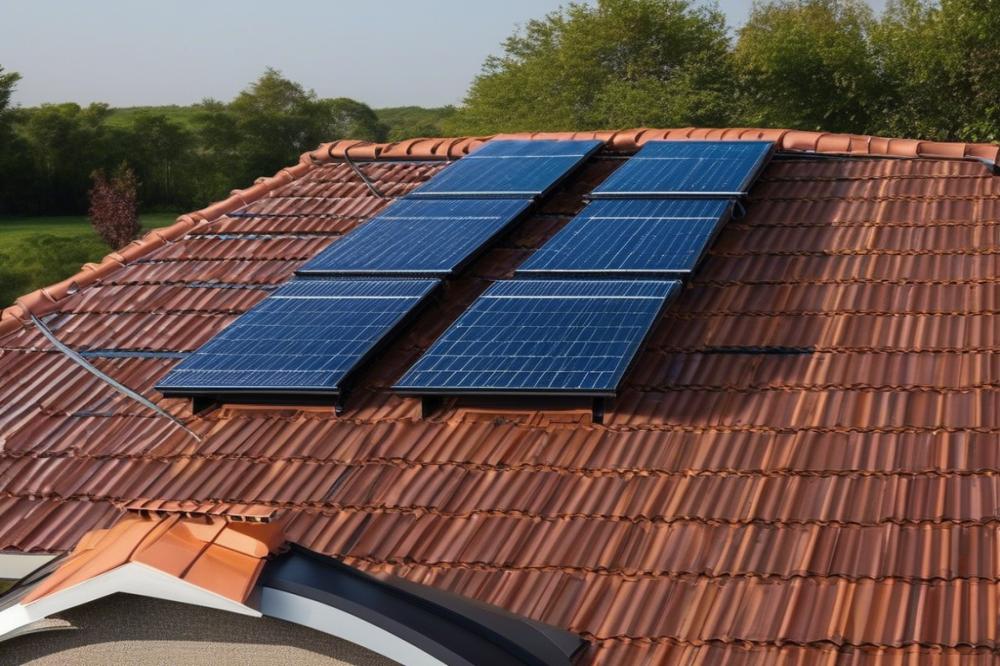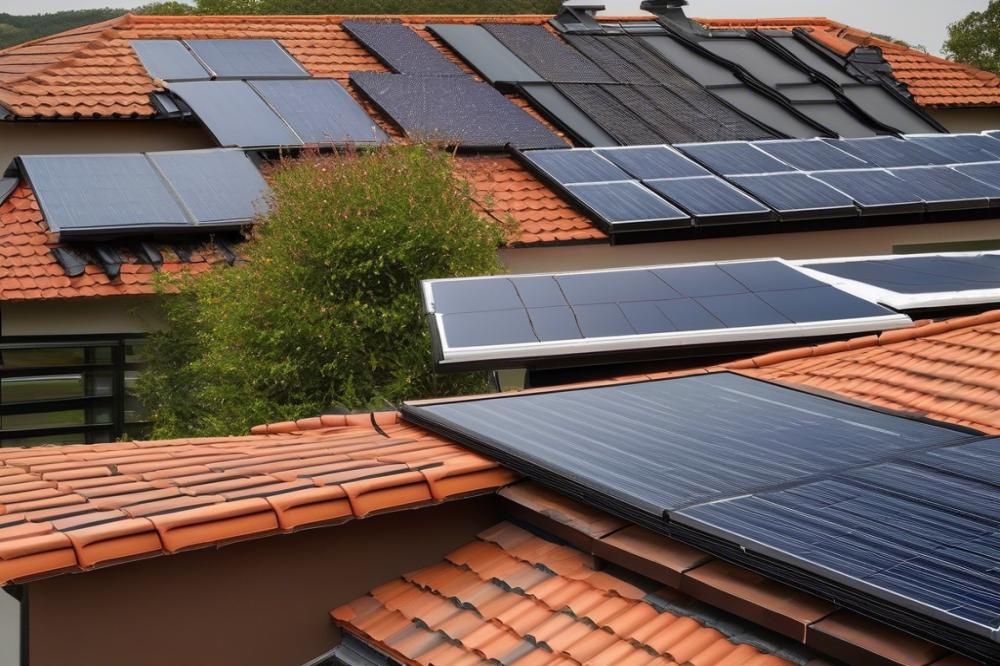Introduction
Solar Roof Tiles blend technology with architecture. They create a sustainable source of energy, harnessing the sun’s power right from a home’s roof. As the world seeks options for renewable energy, these tiles offer innovative solutions. The significance of using solar tiles is growing. More people recognize their potential to reduce electricity bills while minimizing environmental impact.
The process of testing these products for durability in extreme climates is crucial. Weather can vary dramatically across different regions. Storms, heatwaves, and freezing temperatures can all take a toll on materials. Hail resistance, insulation properties, and surface integrity need to be closely examined. The lifespan of solar technology hinges on how well it performs under these conditions.
Many types of weather can affect solar panels. For instance, excessive sun exposure can lead to wear, making testing vital. Rain and moisture can corrode materials over time. In contrast, snow may create heavy loads on roofs, requiring a strong surface. Understanding these factors helps improve the design and performance of Solar Roof Tiles. It also gives homeowners confidence in their investment. When choosing renewable energy solutions, knowing how products stand up against various elements can aid decision-making.
Understanding Solar Roof Tiles

Solar roof tiles represent a cutting-edge approach to renewable energy. These innovative products double as roofing materials and solar technology, integrating seamlessly into homes. Two main types exist: building-integrated photovoltaics (BIPV) and traditional solar shingles. BIPV tiles are designed specifically to replace conventional roofing. In contrast, solar shingles look like ordinary roofing but contain solar cells that harness sunlight.
When comparing solar roof tiles with traditional solar panels, differences become clear. Typical panels are mounted on rooftops, requiring additional structural support. This installation can alter the building’s exterior. Roof tiles, however, blend in naturally, preserving aesthetic appeal. With this integration, homeowners can benefit from energy savings without compromising design.
Benefits of implementing solar roof tiles extend beyond appearance. These tiles offer impressive insulation properties, reducing heating and cooling costs. Additionally, they often have surface integrity that withstands harsh conditions. durability becomes essential in extreme climates, where weather can be unpredictable. Some models boast hail resistance, which protects against damage during storms.
Testing these products involved examining their performance under various weather conditions. This scrutiny verifies how well they perform in direct sun exposure or during heavy rain. The environmental impact of selecting solar roof tiles is significant as well. Using solar energy reduces reliance on fossil fuels, contributing to a healthier planet. Ultimately, these advancements in solar technology provide both practical benefits and ecological advantages.
Durability and Weather Resistance

The durability of solar roof tiles is crucial when considering their long-term use. Factors affecting this durability often include the climate where they are installed. Homeowners in areas with extreme climates face different challenges, such as heavy rain, intense sun exposure, and even hail. These conditions can wear down materials quickly, so understanding their resistance is key.
Materials used in solar technology are designed to withstand environmental stressors. For instance, glass tiles tend to have good hail resistance. Meanwhile, tiles made from synthetic materials may offer better insulation properties. Manufacturers are now prioritizing resilience in their products. This attention to detail means that solar panels can continue to perform well even under tough environmental conditions.
Surface integrity plays a significant role in the overall performance of solar installations. Extreme climates can break down protective layers, exposing the inner materials to damage. When tiles chip or crack, the entire system’s efficiency can suffer. Therefore, maintaining a solid surface is essential to promote longevity. Regular inspections can help homeowners identify wear before it leads to bigger issues.
Testing products for Weather Resistance is becoming a standard part of the development process. Innovative approaches allow for assessing how well solar panels can withstand harsh elements. Results from such testing can guide consumers toward more effective choices. Understanding the environmental impact of these materials is vital. It leads to better decisions for both the planet and individual homes.
Homes located in areas with extreme climates require specially designed solar roof tiles. High temperatures can degrade materials over time if they are not built to last. Research shows that prolonged sun exposure weakens some surfaces, leading to reduced effectiveness. Homeowners should look for tiles that offer a proven track record in various environments. This attention will help in making informed decisions and securing a long-lasting energy source.
Testing Methods for Durability
Overview of Standard Testing Procedures
Testing is crucial to understanding how solar roof tiles perform in various conditions. Evaluators use standardized procedures to assess durability in environments that may expose these materials to extreme climates. Such protocols can mimic real-world scenarios, offering insights into how these products withstand challenges like heavy winds, rain, and temperature shifts. Rigorous examinations are important for the entire renewable energy sector. Insights from these tests inform manufacturers and consumers about potential risks associated with solar technology.
Evaluation of Hail Resistance
Hail storms can be damaging, making it vital to test the hail resistance of roofing materials. Simulated weather events help assess how tiles handle impacts from ice pellets. During testing, equipment launches projectiles at various speeds to represent different hail sizes. Observations during this evaluation focus on surface integrity and potential damage. A pass means the roof tiles can endure harsh weather without significant deformation. Knowledge from such assessments aids homeowners in making informed choices when considering solar energy options.
Assessment of Insulation Properties
Understanding insulation properties is essential for evaluating how well solar roof tiles can perform during temperature variations. Tests examine how tiles maintain internal temperatures amid increasing heat or cold exposure. During these assessments, scientists analyze how effective materials are in preventing heat transfer. Results help determine the energy efficiency of the structure. Efficient insulation can lower heating and cooling costs, making a significant difference in a building’s environmental impact. Durability testing in extreme climates becomes crucial as the demand for sustainable construction continues to grow.
Performance in Extreme Climates
Solar roof tiles face significant challenges in extreme climates. Their performance varies greatly based on environmental conditions like heat, cold, moisture, and dryness. Testing these tiles under different circumstances is essential for understanding their durability and efficiency.
In hot climates, high sun exposure can affect surface integrity. This intense sunlight promotes energy generation but can lead to thermal expansion. Consequently, manufacturers often design tiles to withstand these challenges, ensuring long-lasting performance.
Case studies reveal interesting insights. For instance, installations in the southwestern United States have shown remarkable results. These regions, known for their high temperatures and bright sunlight, find solar technology to be quite efficient. Even with prolonged exposure, many tiles maintain their insulation properties effectively.
Conversely, cold climates present their own set of challenges. Testing in places like Alaska demonstrates how well solar roof tiles perform under icy conditions. Hail resistance becomes critical here, as heavy snow and ice can impact the tiles’ functionality. However, proper engineering enhances their ability to withstand such weather.
Wet and humid areas pose yet another test. Coastal regions experience frequent storms, which can damage weaker materials. Studies have shown that durable solar roof technologies can resist rust and water damage. Appropriate coatings and treatments can also minimize environmental impact.
Humidity does not only create a risk of mold but can also affect overall efficiency. If water accumulates, it can hinder energy production significantly. Therefore, effective drainage systems are vital in these climates.
Dry regions, on the other hand, have unique conditions. While there may be less moisture, dust and debris can accumulate quickly on surfaces. Regular maintenance is crucial for sustaining maximum energy output. These factors heavily influence long-term efficiency and performance.
Installation experiences also vary across the board. Homeowners in different climates report diverse outcomes. Climate adaptation plays a critical role in how well these systems fare over time. Understanding local weather patterns can help guide appropriate selection and installation procedures.
Overall, the longevity and effectiveness of solar roof tiles depend largely on the environmental conditions they endure. Effectively managing sun exposure and selecting the right materials are key components to success. Awareness of varying climate challenges allows for better preparation and implementation of renewable energy solutions.
Environmental Impact
When comparing solar roof tiles to traditional roofing, an important aspect is sustainability. Solar technology promotes renewable energy use, helping to reduce reliance on fossil fuels. They are designed to blend energy generation with aesthetic appeal, serving a dual purpose. This approach makes them an attractive option for homeowners looking for eco-friendly solutions.
Lifecycle Assessment of Materials Used
Evaluating the materials involved in producing these tiles reveals significant insights. Many tiles utilize durable resources, focusing on longevity and minimal environmental strain. It’s crucial to assess how these materials perform under various conditions, especially in extreme climates. Testing their ability to handle weather challenges is essential for consumers. For instance, insulation properties can enhance energy efficiency for homes and lower utility bills.
Recycling and End-of-Life Considerations
Addressing end-of-life scenarios is vital for understanding the full environmental impact. When roof tiles eventually reach the end of their lifespan, recycling options can determine how they contribute to sustainable practices. Many manufacturers are exploring ways to recycle used tiles, reducing waste and maximizing resources. Hail resistance and surface integrity become key factors during both use and disposal. Effectively managing materials at every stage helps to minimize ecological footprints and promotes a circular economy.
Furthermore, prolonged sun exposure can influence the longevity of roofing materials. Ensuring these tiles can withstand harsh conditions increases their practicality and appeal. Homeowners must weigh these qualities as they make environmentally-conscious choices about roofing materials for their properties.
Final Thoughts
Summary of Findings on Durability
Research has shown that solar roof tiles can withstand various weather conditions. Tests conducted in extreme climates demonstrate their ability to resist high winds, intense heat, and even hail. Results indicate that these tiles maintain structural integrity and efficiency over time. This durability is crucial for consumers looking for long-lasting and reliable energy solutions.
Future Directions for Research and Development
Looking forward, there is ample room for advancement in this field. Future studies could focus on enhancing performance in specific environments, such as areas with heavy snowfall or extreme humidity. Innovations might also look into improving energy absorption during cloudy days. Collaboration among researchers, engineers, and manufacturers will be essential in driving these developments.
The Role in Advancing Renewable Energy Solutions
Solar roof tiles play a vital role in promoting renewable energy. They provide an option that not only generates power but also protects homes. As society shifts towards sustainable practices, products like these contribute to a larger movement. Continued investment in research and development will foster breakthroughs in solar technology, making it more accessible. In the grand scheme, strengthening their durability underscores the importance of sustainability and energy independence.



